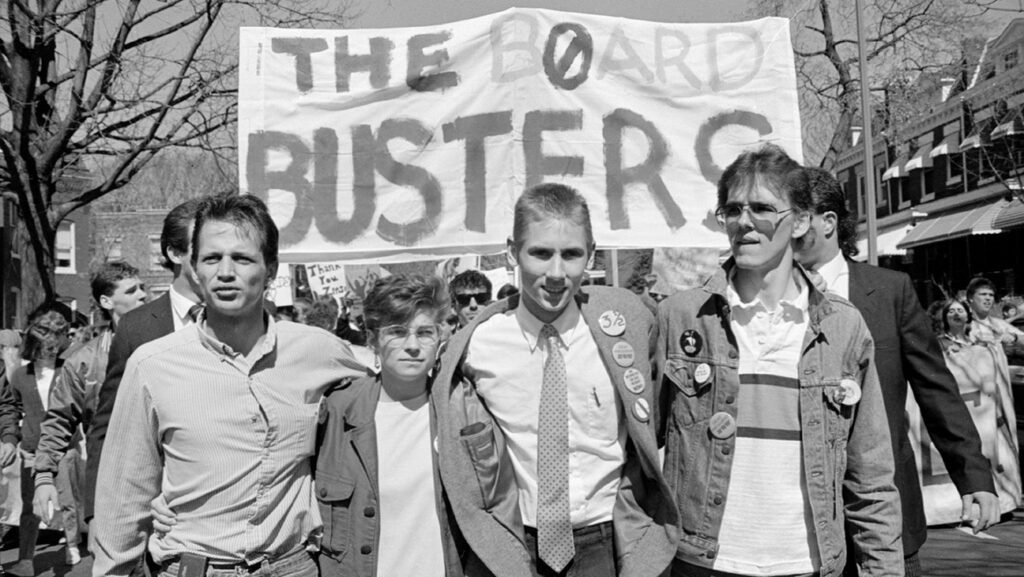Since 1988, a deaf president has presided over Gallaudet University, a private Washington, D.C., institution for the deaf and hard of hearing, founded in 1864. That triumph can be credited to four alumni whose rejection of the March 6, 1988, appointment of Elisabeth Zinser, who would’ve become the university’s seventh hearing president, is documented in Nyle DiMarco and Davis Guggenheim’s Deaf President Now!
“I didn’t understand how a deaf institution was made for deaf students and had never had a deaf president,” says DiMarco, whose parents — who, like him, are deaf, as are his grandparents and great-grandparents — told him and his brothers the story of the student protests as a young child. “Eight-year-old me just didn’t really comprehend that.”
Neither did Tim Rarus, Bridgetta Bourne-Firl, Greg Hlibok or Jerry Covell, the Gallaudet students known as the DPN4 (Deaf President Now four), who immediately began organizing across campus to fight the administration’s appointment of Zinser. Their movement was simple and direct: Deaf President Now. The documentary is the first time the DPN4 have told their story on film.
“The four student leaders from the film had been approached, which we didn’t know initially, by other production companies, and multiple times had turned them down,” says DiMarco. “They felt really hesitant because the idea of handing this story over to hearing people who had forgotten it in the first place just didn’t sit well.”
Deaf President Now!, which DiMarco began working on in 2019, started out in scripted format, yet as the filmmakers dove deeper into their research, they decided the story was best served as a documentary. Working with production company Concordia Studio, more than 40 deaf people were hired across departments behind the scenes.
“I wanted to really stay true to the theme of Deaf President Now. The protest was about allowing deaf people to lead and tell their own story, so we were very intentional in our hiring,” says DiMarco. “One of the first people whom we brought on was Wayne Betts Jr., who is a brilliant filmmaker from the deaf community, and we worked together to really tailor what we refer to as the deaf POV. We wanted to really elevate the film with visual design and elements that invite you into our experience.”
That included omitting sound altogether in some scenes in the Apple Original film and incorporating movement and flashes of light onscreen “to experience sound visually,” he adds.

Elisabeth Zinser
Courtesy of Apple TV+
Praising the vision of DiMarco, the first deaf director to be nominated for an Emmy (the film also received a nod for outstanding documentary), Guggenheim says, “He was not just a champion, but a guy who would not take the answer ‘no.’ Hearing producers and production companies would come in, look at [the script] and go, ‘I don’t know how we do this,’ and then they abandoned it, and Nyle just said, ‘No. We have to tell this story. This is too important.’ “
On March 13, 1988, after a week of protests, Gallaudet named I. King Jordan its first deaf president, a win that spawned other victories, like the Americans With Disabilities Act, signed into law in 1990, prohibiting discrimination based on ability.
As school budgets, which include deaf education, are being cut across states, DiMarco says: “A film like this is an excellent reminder of how much work we still have to do in our community. It speaks to the power of collective action and that it can be successful.”
This story first appeared in an August stand-alone issue of The Hollywood Reporter magazine. To receive the magazine, click here to subscribe.

